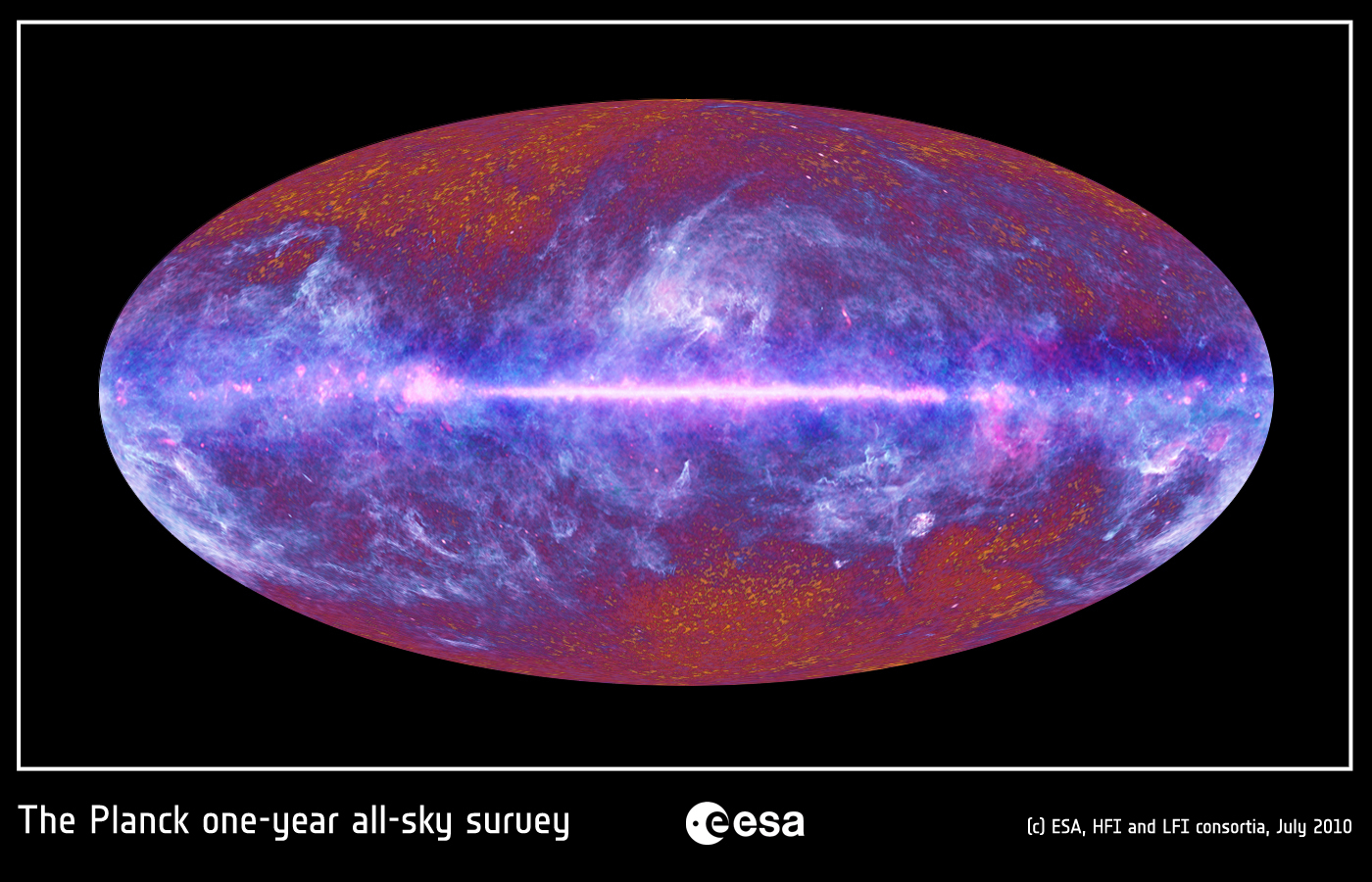
http://news.bbc.co.uk/1/hi/science_and_environment/10501154.stm
This is the first all-sky map created by the European Space Agency's Planck space telescope. It images in the microwave wavelengths.
For one, this is an absolutely brilliant image. It will I think become recognised as one of the truly great astronomical images, up there with the likes of the Hubble Deep Fields and some of the brilliant nebula photographs.
It's also of great scientific significance - or rather the data behind it is. ESA say this particular rendering is no good for science due to the colouring and lowered resolution.
Features of interest:
The bright mauve across the middle is our galactic disk
The blue features above and below it are reckoned to be "streamers" of gas that surround our galaxy. The exact origins of these streamers is I think still not fully settled, but they're suspected to be formed from dwarf galaxies that came too close to the Milky Way and got ripped apart.
The mottled red background is perhaps the main focus of interest - the Cosmic Microwave Background, the oldest radiation in the Universe. This is the data that could answer the really big cosmological questions - although in fairness, many, like the Universe's age and overall composition, are already pinned down well by WMAP. But already the Planck image looks sharper than that of WMAP, and the Planck data will get even better as the probe continues operating.
Thoughts, on either the Planck results or on cosmology in general? (To be honest I really just want people to see the picture)


